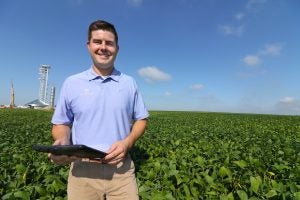As the struggling U.S. farm economy continues to make the news, agricultural organizations, government agencies and conservation groups are rightly focusing their attention on the affordability of conservation adoption.
A 2018 report from EDF and agricultural accounting firm K·Coe Isom, Farm Finance and Conservation, found that farmers who adopt conservation practices such as no-till, nutrient optimization, cover crops and diverse rotations improved their profitability and were more resilient.
Despite these benefits, the costs of transitioning to conservation management practices can be a barrier to adoption. In addition, any change carries some risk, and farmers are likely to be reluctant to take on additional risk in the current economic climate.
For these reasons, it is more important than ever to provide farmers with practical guidance on how to minimize the costs and risks of conservation adoption. Fortunately, a new technical bulletin from the Sustainable Agriculture Research and Education (SARE) program at the U.S. Department of Agriculture does just that.
Cover Crop Economics: Opportunities to Improve Your Bottom Line in Row Crops [PDF] describes seven different management scenarios in which farmers can speed their transition to cover crops and achieve profitability more quickly — in some cases within the first year of adoption. Read More










